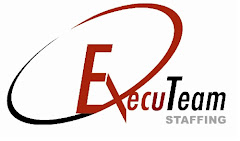You think it’s tough to find a job now?
It’s been tougher.
Like in the Great Depression of the 1930s, for example.
Try to imagine a world without Twitter or Facebook, when the unemployment rate ranged from 14.3% to 24.9% (1931 to 1938).
Would you be interested in learning two ways to find that worked back then -- and still work now?
Here they are …
1.Appeal to the self-interest of the employer
In the book, "Pick Your Job And Land It!" published in 1938, the authors, S.W. and M.G. Edlund, share the story of one job seeker, Barrett Havens, who put together a seemingly flawless written portfolio of his accomplishments, one that had produced several interviews for the position of manufacturing manager.
Yet Havens received no job offers.
So the Edlunds suggested that in his next job interview, Havens should ask smart questions of the employer: How had they been able to navigate seasonal slumps? How did they develop new products? How did they get help from retailers in selling their products?
By asking questions, Havens would start conversations based on the employer's interests, could tell of similar problems he had solved, and then refer to his written examples to back up his claims.
The results were dramatic -- within one week, Havens had an interview with an employer who was so enthralled with his questions that he cancelled lunch and his afternoon appointments so he could continue talking. (When's the last time an employer missed a meal to listen to you?)
Your takeaway lesson: When you realize that no employer wants to hire you and that every employer has problems to solve, you can start to appeal to their self-interests. How? By discovering their problems and proposing solutions. All you need do is start asking questions.
2.Look outside to find your hidden assets
Among the other examples in "Pick Your Job And Land It!" of people who found work in the Depression is that of John Shaffer. According to the authors, Shaffer didn’t seem to have any assets besides a pair of hands.
Despite a college degree, Shaffer thought the only jobs available to him would be like the retail clerk and food merchandising positions he had held after college.
(A college grad who felt doomed to a life of dead-end jobs. Hmm. Know anybody like that?)
However, after thoroughly analyzing his work history with friends and business acquaintances, “[Shaffer] began to appreciate that his two jobs had been full of unusual opportunities. He began to see the fundamentals underlying his experience and to realize he had gained an insight into selling problems which would be of value to other firms,” write the authors.
In the retail job, Shaffer “had observed the effect of advertising, merchandising, and counter display on the sales of high-grade merchandise,” according to the authors, while at the food manufacturer, he had seen how advertising had greatly improved product sales.
After analyzing his experience, Shaffer realized that his work had exposed him to effective marketing that went beyond the job titles of “clerk” or “merchandiser.” As a result, Shaffer was able to retell the story of his employment in a way that interested employers -- and got him a better, higher-paying job.
Here are the key paragraphs from his winning cover letter, written circa 1936:
“During the past two and a half years I have been with a large food concern marketing a staple food product in a highly competitive field. At first, this was sold primarily on a price appeal. Then followed a comprehensive advertising and point of sale program designed to enable the retailer to maintain price and so increase profits. As a result, I have seen the sales curve of this company rise steadily.
“My particular job, which I sill hold, has been to contact several thousand dealers in Manhattan, put up display material, and establish good will by merchandising the consumer advertising and price policy.
“Prior to this I spent six months with Strauch’s, where I observed how advertising and display, coupled with keen sales psychology, effectively moved quality merchandise ….”
Your takeaway lesson: What success stories have you observed in past jobs that could help future employers? Note that verb -- observed. Anyone can learn by watching, if they’re looking for lessons. What have you learned?
Now. This is where you need outside help.
Simply put, you WILL underestimate the value of your experience if you analyze it yourself -- it’s like trying to describe the back of your head without a mirror.
Get a mirror, or, in this case, get a friend or three who will sit down over coffee and ask you about exactly what you’ve observed and what you’ve learned in every job you’ve held.
Then, write it all on paper, as specifically and extensively as possible.
When you do this, you’ll unearth hidden assets that can appeal to employers. Doing so got people hired in the Great Depression, when unemployment ran as high as 24.9%. And it can get you hired now, when the job market isn’t half as bad.
- Kevin Donlin
Kevin Donlin is co-author of Guerrilla Resumes. Since 1996, he has provided job-search help to more than 20,000 people. Kevin has been interviewed by The New York Times, USA Today, Fox News, ABC TV, CBS Radio and others. Learn more about Guerrilla Resumes
copyright (c) 2010 by Kevin Donlin
From www.net-temps.com
Monday, July 26, 2010
Subscribe to:
Post Comments (Atom)




No comments:
Post a Comment